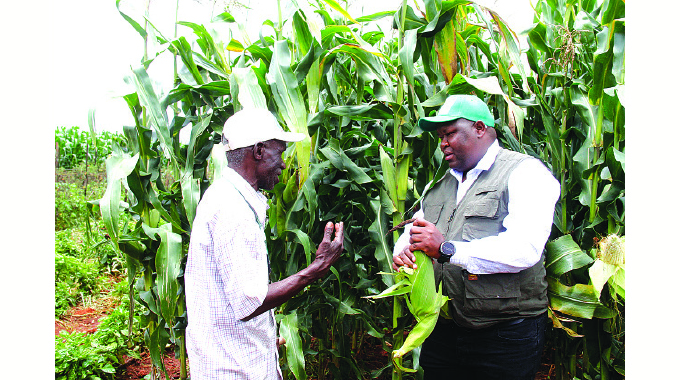State of crops points to bumper harvest

Preliminary crop assessments in most parts of the country point to a bumper harvest this year, particularly of the staple food, maize.
Unlike drought conditions that characterised last year’s summer farming season, rains this year have been consistent, and evenly spread, giving hope of a much improved harvest.
The country last year did not produce enough food for domestic consumption, maize in particular, and was forced to import to supplement.
Most other countries in the region were in the same boat, as the drought hit almost the entire southern African region.
Apart from good rains experienced so far this farming season, early agricultural preparation on the part of government in terms of timely provision of input support for farmers, also played a huge part in achieving the expected good harvest.
The government supported farmers, especially in communal and resettlement areas, with inputs such as seed and fertilisers, under the presidential and Pfumvudza programmes.
Early reports across the country indicate the crops are healthy and thriving, and reaching maturity.
In Mutoko, on average, 80 percent of the maize crop in the district is in good condition, with some of it at tasselling stage.
Farmers who planted a little late in the district were applying top dressing fertiliser, taking full advantage of the current wet spell that has hit much of the country.
In Mutasa district in Manicaland Province, farmers have not only exceeded the targeted maize hectarage of 32 000 to 38 000, the crops are also healthy, and thriving.
Local Agritex agronomist, Abraham Matsanura said other crops in the district, such as tobacco, were also doing well, and expects a bumper harvest if the good rains persist.
Over 25 hectares have been put under tobacco in Mutasa district.
Although the rains have been patchy in parts of Masvingo province, crops are thriving, particularly small grains that are drought tolerant.
The province is in the south of the country which traditionally receive less rainfall even when Zimbabwe and the region experience normal rains.
The thriving traditional grain crops in Masvingo is testimony of the government’s wisdom this year of tailoring seed input support to farmers to ecological regions.
This has ensured that farmers, drought or no drought, are able to harvest something reasonable for consumption at household level.
The previous uniform distribution of maize seed, even in regions the crops did not do well, had been found to still leave people in drought prone areas food insecure.
In the current season, it is expected that production of traditional small grains such as sorghum and millet, will be significantly boosted after the tailored seed input distribution. — New Ziana.











Comments